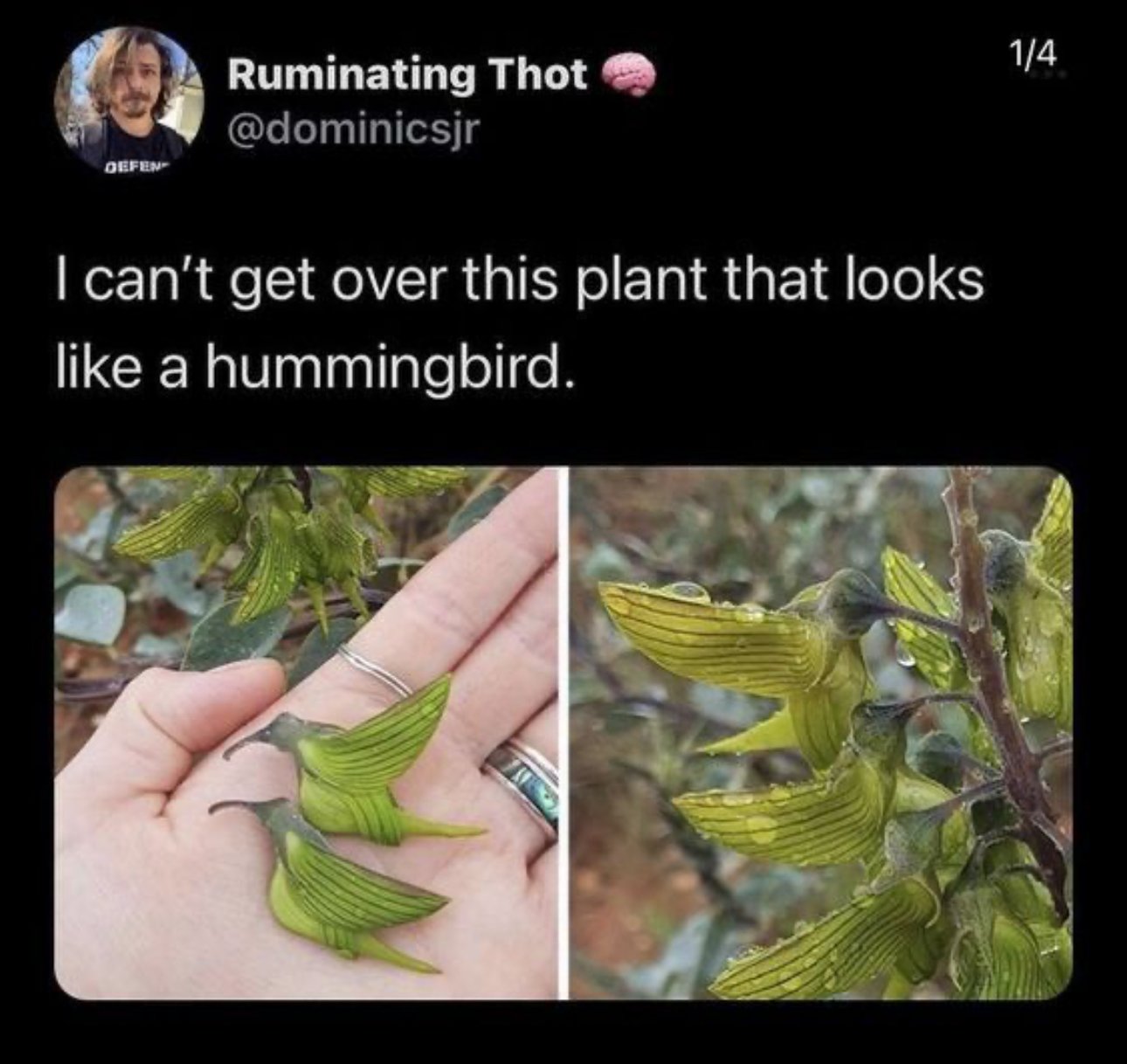The most amazing thing about this is that the plant has never seen a hummingbird.
Think about it. The plant has no eyes nor the ability to change its own leaves. What must have happened? Maybe an ancestor had leaves that randomly, vaguely resembled a bird? Perhaps the descendants that happened to look more like hummingbirds were then pollinated more often than the rest?
Nature is so fucking crazy and I love it.
